NUR 4270 Maternity Practice Questions with satisfactory answers 2021
Document Content and Description Below
NUR 4270 Maternity Practice Questions with satisfactory answers 2021
Maternity Practice Questions
1) During the client’s initial prenatal visit, which of the following would indicate a need for fu
...
rther assessment?
A. History of diabetes for 6 years.
B. Exercises three times a week.
C. Occasional use of over-the-counter pain relievers.
D. Maternal age 30 years.
2) The low-risk patient, who is 16 weeks’ pregnant, should be told to return to the prenatal clinic in:
A. 1 week.
B. 2 weeks.
C. 3 weeks.
D. 4 weeks.
3) A client comes to the clinic for her first prenatal visit and reports that July 10 was the first day of her last menstrual period. Using Nagele’s Rule, the nurse calculates the estimated date of birth for the client to be APRIL 17
4) The pregnant client reports that she has a 3-year old child at home who was born at term, had a miscarriage at 10 weeks’ gestation, and delivered a set of twins at 28 weeks’ gestation that died within 24 hours. In the prenatal record, the nurse should record:
A. Gravida 2, para 1.
B. Gravida 3, para 3.
C. Gravida 4, para 2.
D. Gravida 5, para 4.
Grava – number of times pregnant
Para – viability (carried to term)
5) The client who is 40 weeks gestation seems upset and tells the nurse that the physician told her she needs to have a nonstress test. The client asks why she needs the test. The nurse’s best response would be:
A. “This is a test to see if your stress level is affecting your baby’s growth and well-being.
B. “This is a test to see if your baby will be able to withstand the stress of labor.”
C. “This is a test to assess your baby’s well-being now that you are due to deliver soon.”
D. “This is a test to let us know if your baby needs to be delivered to avoid a bad outcome.”
6). A client of 38 weeks gestation was admitted to Labor and Delivery. On admission, the fetal heart rate baseline was noted to be 140. The fetal heart arte is now 170. An explanation for this could be: (Select all that apply).
A. Maternal fever
B. Narcotic administration
C. Fetal movement
D. Utero-placental insufficiently
E. Fetal distress.
7).Which FHR finding is the most concerning to the nurse who is providing care to a laboring client?
A. Accelerations with fetal movement
B. Early decelerations
C. Average FHR of 126 beats per minute
D. Late decelerations
8). Which FHR decelerations would require the nurse to change the maternal position? (Selectall that apply.)
A.Early decelerations
B. Late decelerations
C. Variable decelerations
D. Moderate decelerations
E. Prolonged decelerations
9). The nurse has received a report regarding a client in labor. The woman’s last vaginal examination was recorded as 3 cm, 30%, and –2. What is the nurse’s interpretation of this assessment?
A. Cervix is effaced 3 cm and dilated 30%; the presenting part is 2 cm above the ischial spines
B. Cervix is dilated 3 cm and effaced 30%; the presenting part is 2 cm above the ischial spines.
C. Cervix is effaced 3 cm and dilated 30%; the presenting part is 2 cm below the ischial spines
D. Cervix is dilated 3 cm and effaced 30%; the presenting part is 2 cm below the ischial spines.
10). Which statement by the client will assist the nurse in determining whether she is in true labor as opposed to false labor?
A. “I passed some thick, pink mucus when I urinated this morning.”
B. “My bag of waters just broke.”
C. “The contractions in my uterus are getting stronger and closer together.”
D. “My baby dropped, and I have to urinate more frequently now.”
11). When assessing a woman in the first stage of labor, which clinical finding will alert the nurse that uterine contractions are effective?
A. Dilation of the cervix (only true measure)
B. Descent of the fetus to –2 station
C. Rupture of the amniotic membranes
D. Increase in bloody show
12). A multiparous woman has been in labor for 8 hours. Her membranes have just ruptured. What is the nurse’s highest priority in this situation?
A. Prepare the woman for imminent birth.
B. Notify the woman’s primary health care provider.
C. Document the characteristics of the fluid.
D. Assess the fetal heart rate (FHR) and pattern.
13). What is the most critical nursing action in the care of a newborn immediately after birth?
A. Keeping the airway clear
B. Fostering parent-newborn attachment
C. Drying the newborn and wrapping the infant in a blanket
D. Administering eye drops and vitamin K
14). A 25-year-old gravida 3, para 2 client gave birth to a 9-pound, 7-ounce boy, 4 hours ago after augmentation of labor with oxytocin (Pitocin). She presses her call light, and asks for her nurse right away, stating “I’m bleeding a lot.” What is the most likely cause of postpartum hemorrhaging in this client?
A. Retained placental fragments
B. Unrepaired vaginal lacerations
C. Uterine atony
D. Puerperal infection
15). What is the primary rationale for the thorough drying of the infant immediately after birth?
A. Stimulates crying and lung expansion
B. Removes maternal blood from the skin surface
C. Reduces heat loss from evaporation
D. Increases blood supply to the hands and feet
16). A woman gave birth to a 7-pound, 6-ounce infant girl 1 hour ago. The birth was vaginal, the estimated blood loss (EBL) was 1500 ml. Which finding would be of greatest concern?
A. Temperature 37.9° C, heart rate 120 beats per minute (bpm), respirations 20 breaths per minute, and blood pressure 90/50 mm Hg
B. Temperature 37.4° C, heart rate 88 bpm, respirations 36 breaths per minute, and blood pressure 126/68 mm Hg
C. Temperature 38° C, heart rate 80 bpm, respirations 16 breaths per minute, and blood pressure 110/80 mm Hg
D. Temperature 36.8° C, heart rate 60 bpm, respirations 18 breaths per minute, and blood pressure 140/90 mm Hg
17). What is the rationale for the administration of vitamin K to the healthy full-term newborn?
A. Most mothers have a diet deficient in vitamin K, which results in the infant being deficient.
B. Vitamin K prevents the synthesis of prothrombin in the liver and must be administered by injection.
C. Bacteria that synthesize vitamin K are not present in the newborn’s intestinal tract.
D. The supply of vitamin K in the healthy full-term newborn is inadequate for at least 3 to 4 months and must be supplemented.
18). A newborn is jaundiced and is receiving phototherapy via ultraviolet bank lights. What is the most appropriate nursing intervention when caring for an infant with hyperbilirubinemia and receiving phototherapy?
A. Applying an oil-based lotion to the newborn’s skin to prevent dying and cracking
B. Limiting the newborn’s intake of milk to prevent nausea, vomiting, and diarrhea
C. Placing eye shields over the newborn’s closed eyes
D. Changing the newborn’s position every 4 hours
19). A pregnant woman is being discharged from the hospital after the placement of a cervical cerclage because of a history of recurrent pregnancy loss, secondary to an incompetent cervix. Which information regarding postprocedural care should the nurse emphasize in the discharge teaching?
A. Any vaginal discharge should be immediately reported to her health care provider.
B. The presence of any contractions, rupture of membranes (ROM), or severe perineal pressure should be reported.
C. The client will need to make arrangements for care at home, because her activity level will be restricted.
D. The client will be scheduled for a cesarean birth.
20). A 26-year-old pregnant woman, gravida 2, para 1-0-0-1, is 28 weeks pregnant when she experiences bright red, painless vaginal bleeding. On her arrival at the hospital, which diagnostic procedure will the client most likely have performed?
A. Amniocentesis for fetal lung maturity
B. Abdominal Ultrasound for placental location
C. Contraction stress test (CST)
D. Internal fetal monitoring
21). What is the highest priority nursing intervention when admitting a pregnant woman who has experienced a bleeding episode in late pregnancy?
A. Assessing FHR and maternal vital signs
B. Performing a venipuncture for hemoglobin and hematocrit levels
C. Placing clean disposable pads to collect any drainage
D. Monitoring uterine contractions
22). In contrast to placenta previa, what is the most prevalent clinical manifestation of abruptio placentae?
A. Bleeding
B. Intense abdominal pain
C. Uterine activity
D. Cramping
23). When caring for a pregnant woman with cardiac problems, the nurse must be alert for the signs and symptoms of cardiac decompensation. Which critical findings would the nurse find on assessment of the client experiencing this condition?
A. Regular heart rate and hypertension
B. Increased urinary output, tachycardia, and dry cough
C. Shortness of breath, bradycardia, and hypertension
D. Dyspnea, crackles, and an irregular, weak pulse
24). A woman has experienced iron deficiency anemia during her pregnancy. She had been taking iron for 3 months before the birth. The client gave birth by cesarean 2 days earlier and has been having problems with constipation. After assisting her back to bed from the bathroom, the nurse notes that the woman’s stools are dark (greenish-black). What should the nurse’s initial action be?
A. Perform a guaiac test, and record the results.
B. Recognize the finding as abnormal, and report it to the primary health care provider.
C. Recognize the finding as a normal result of iron therapy
D. Check the woman’s next stool to validate the observation.
25). Postoperative care of the pregnant woman who requires abdominal surgery for appendicitis includes which additional assessment?
A. Intake and output (I&O) and intravenous (IV) site
B. Signs and symptoms of infection
C. Vital signs and incision
D. Fetal heart rate (FHR) and uterine activity
26). Which information regarding the care of antepartum women with cardiac conditions is most important for the nurse to understand?
A. Stress on the heart is greatest in the first trimester and the last 2 weeks before labor.
B. Women with class II cardiac disease should avoid heavy exertion and any activity that causes even minor symptoms.
C. Women with class III cardiac disease should get 8 to 10 hours of sleep every day and limit housework, shopping, and exercise.
D. Women with class I cardiac disease need bed rest through most of the pregnancy and face the possibility of hospitalization near term.
27). A primigravida is being monitored at the prenatal clinic for preeclampsia. Which finding is of greatest concern to the nurse?
A. Blood pressure (BP) increase to 138/86 mm Hg
B. Weight gain of 0.5 kg during the past 2 weeks
C. Dipstick value of 3+ for protein in her urine
D. Pitting pedal edema at the end of the day
28). What nursing diagnosis is the most appropriate for a woman experiencing severe preeclampsia?
A. Risk for injury to mother and fetus, related to central nervous system (CNS) irritability
B. Risk for altered gas exchange
C. Risk for deficient fluid volume, related to increased sodium retention secondary to
the administration of magnesium sulfate
D. Risk for increased cardiac output, related to the use of antihypertensive drugs
29). Which neonatal complications are associated with hypertension in the mother?
A. Intrauterine growth restriction (IUGR) and prematurity
B. Seizures and cerebral hemorrhage
C. Hepatic or renal dysfunction
D. Placental abruption and DIC
30). A woman at 26 weeks of gestation is being assessed to determine whether she is experiencing preterm labor. Which finding indicates that preterm labor is occurring?
A. Estriol is not found in maternal saliva.
B. Irregular, mild uterine contractions are occurring every 12 to 15 minutes.
C. Fetal fibronectin is present in vaginal secretions.
D. The cervix is effacing and dilated to 2 cm.
31). A woman with gestational diabetes has had little or no experience reading and interpreting glucose levels. The client shows the nurse her readings for the past few days. Which reading signals the nurse that the client may require an adjustment of insulin or carbohydrates?
A. 75 mg/dl before lunch. This is low; better eat now.
B. 115 mg/dl 1 hour after lunch. This is a little high; maybe eat a little less next time.
C. 115 mg/dl 2 hours after lunch. This is too high; it is time for insulin.
D. 50 mg/dl just after waking up from a nap. This is too low; maybe eat a snack before going to sleep
32). Preconception counseling is critical in the safe management of diabetic pregnancies. Which complication is commonly associated with poor glycemic control before and during early pregnancy?
A. Frequent episodes of maternal hypoglycemia
B. Congenital anomalies in the fetus
C. Hydramnios
D. Hyperemesis gravidarum
33). A perinatal nurse is caring for a woman in the immediate postbirth period. Assessment reveals that the client is experiencing profuse bleeding. What is the most likely cause for this bleeding?
A. Uterine atony
B. Uterine inversion
C. Vaginal hematoma
D. Vaginal laceration
34). A premature infant with respiratory distress syndrome (RDS) receives artificial surfactant. How does the nurse explain surfactant therapy to the parents?
A. “Surfactant improves the ability of your baby’s lungs to exchange oxygen and carbon dioxide.”
B. “The drug keeps your baby from requiring too much sedation.”
C. “Surfactant is used to reduce episodes of periodic apnea.”
D. “Your baby needs this medication to fight a possible respiratory tract infection.”
35). A mother was diagnosed with gonorrhea immediately after delivery. When providing nursing care for her baby, an important goal of the nurse is to:
A. Prevent the development of ophthalmia neonatorum.
B. Lubricate the eyes.
C. Prevent the development.
D. Teach the danger of breastfeeding with gonorrhea.
36). A pregnant woman at 37 weeks of gestation has had ruptured membranes for 26 hours. A cesarean section is performed for failure to progress. The fetal heart rate (FHR) before birth is 180 beats per minute with limited variability. At birth the newborn has Apgar scores of 6 and 7 at 1 and 5 minutes and is noted to be pale and tachypneic. Based on the maternal history, what is the most likely cause of this newborn’s distress?
A. Hypoglycemia
B. Phrenic nerve injury
C. Respiratory distress syndrome
D. Sepsis
[Show More]
Last updated: 3 years ago
Preview 1 out of 7 pages







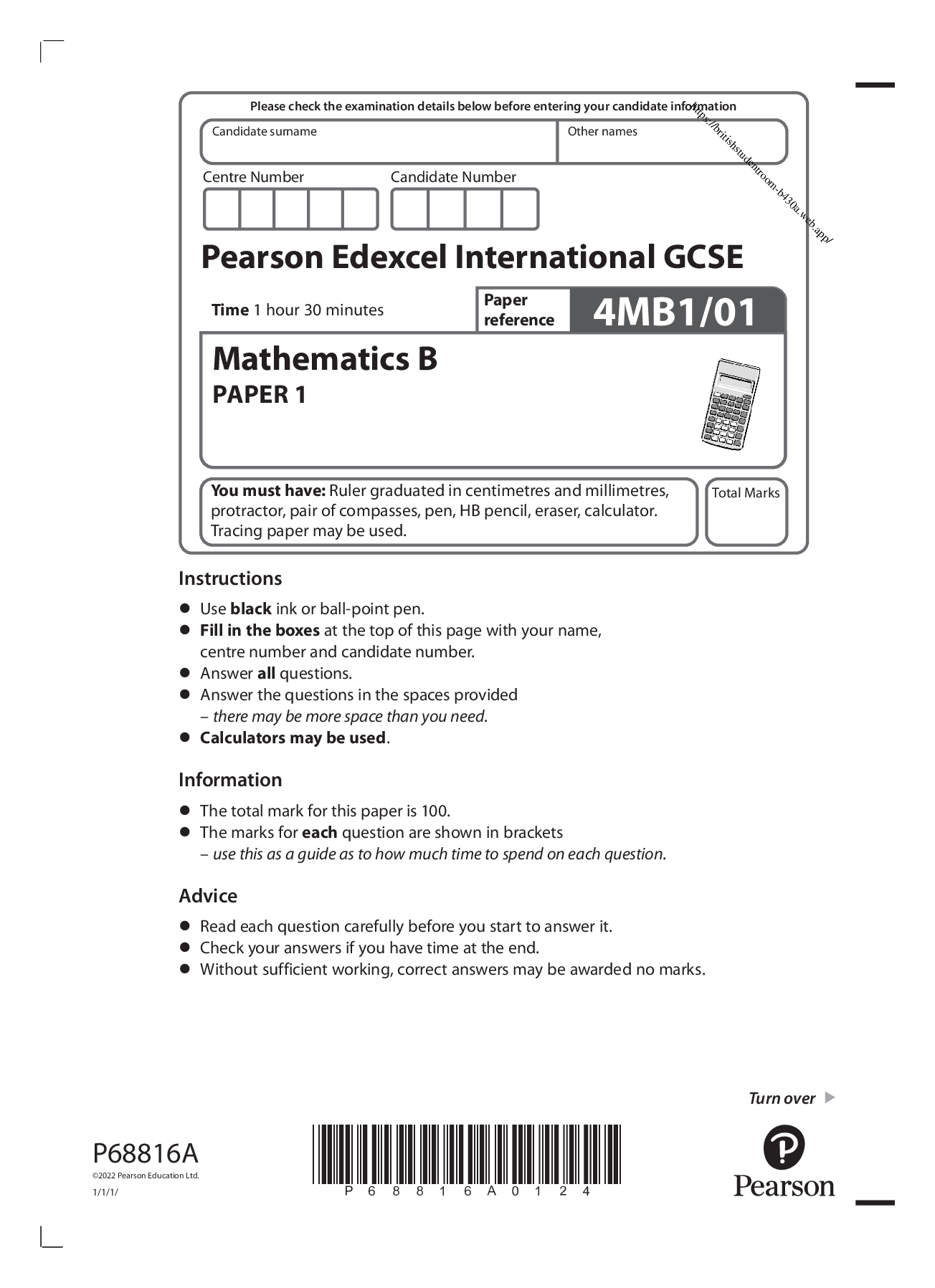
.png)
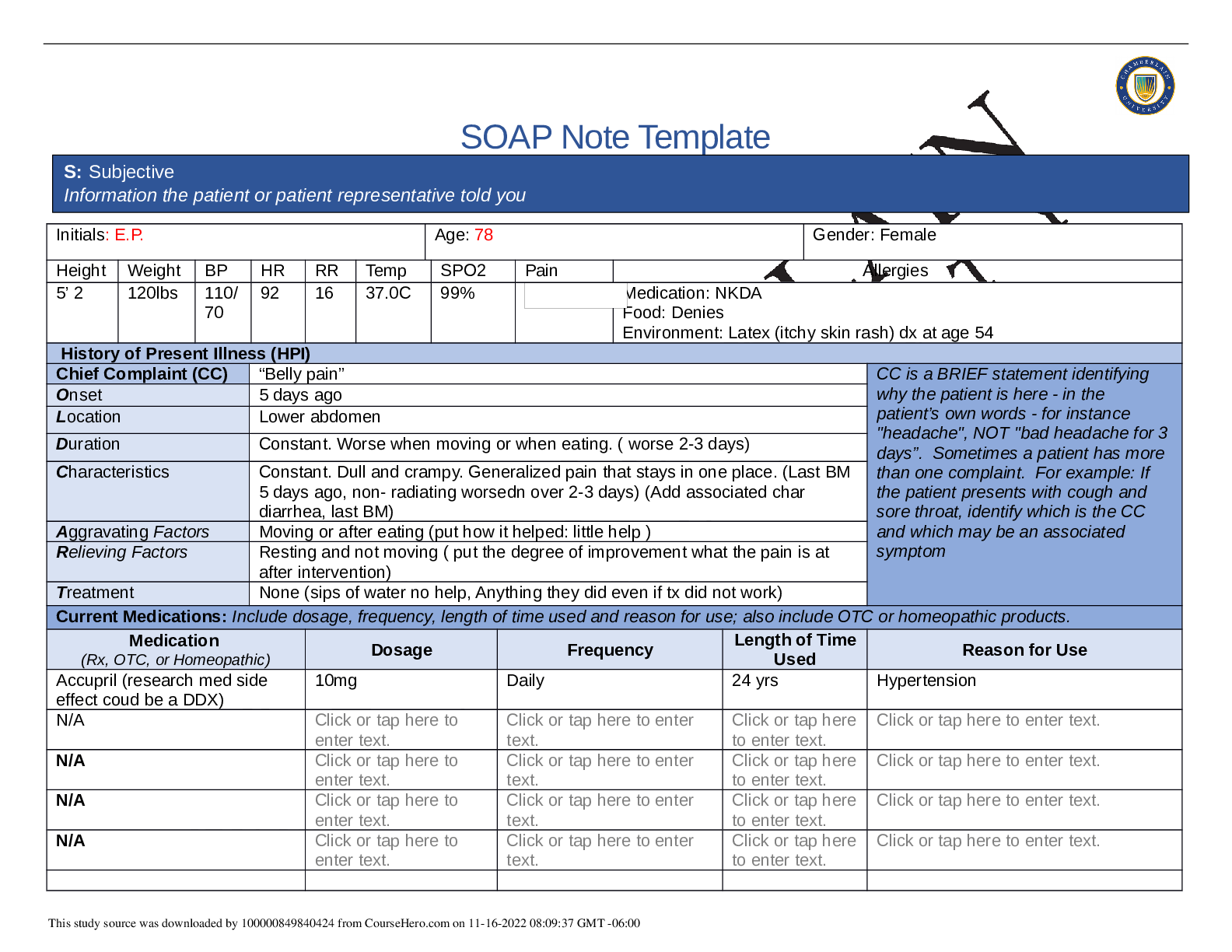

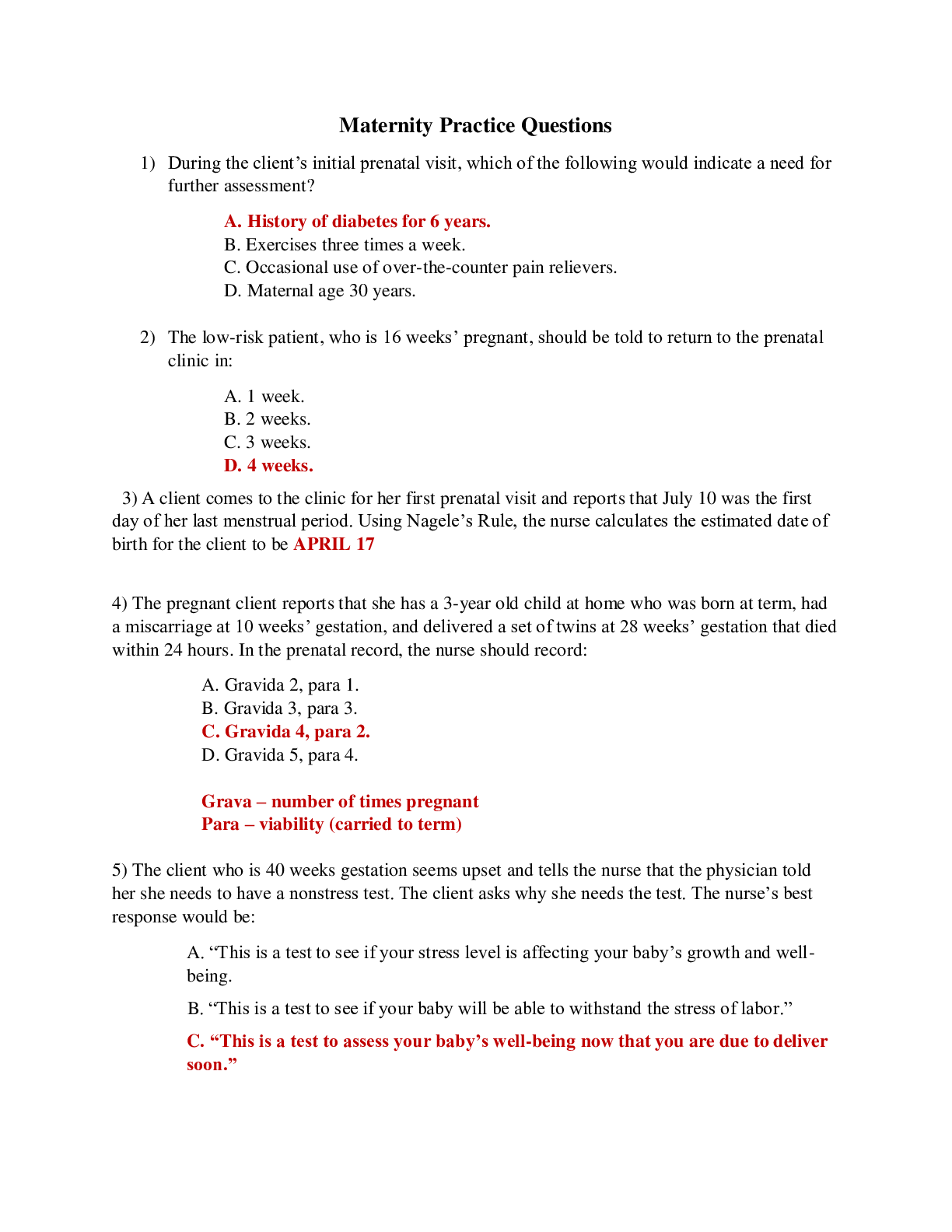











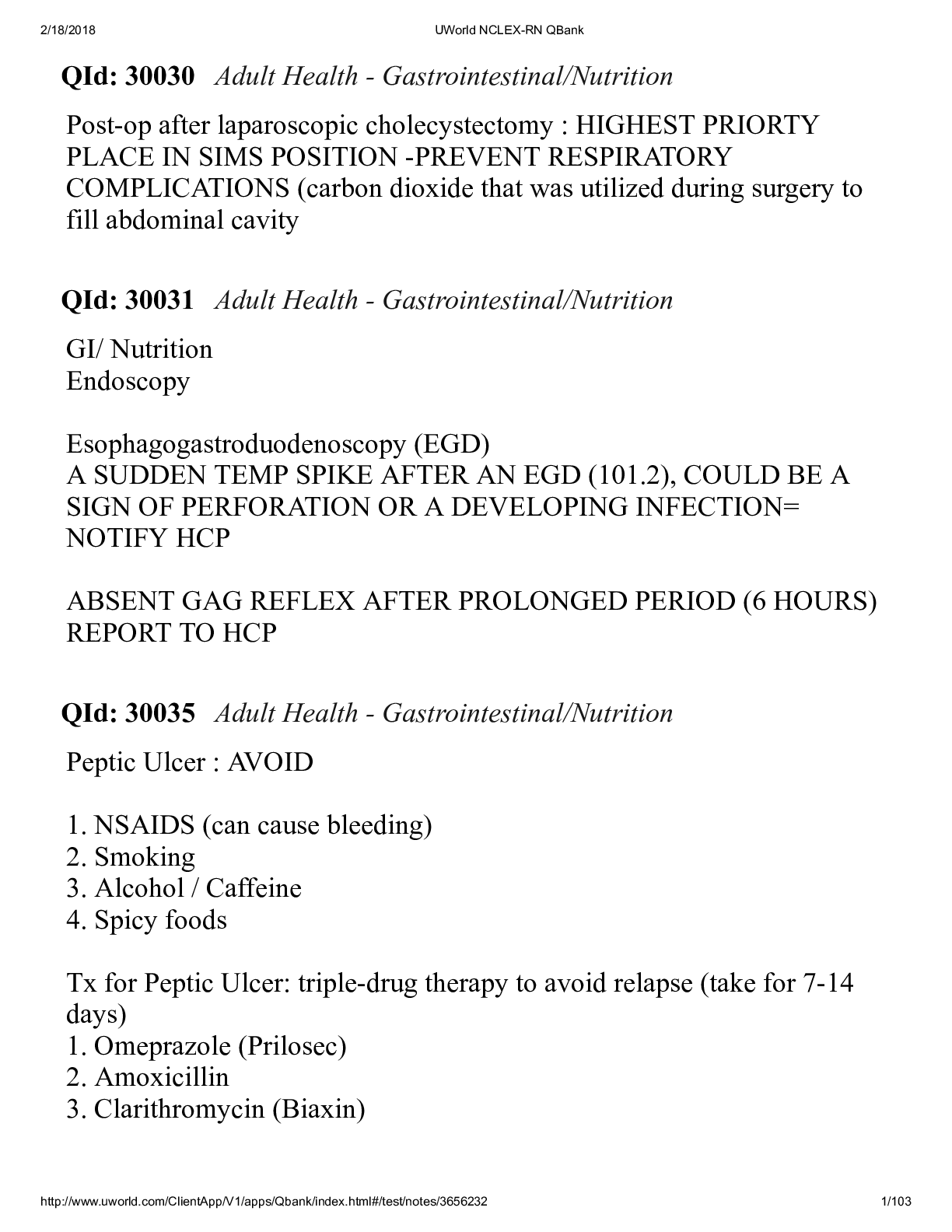


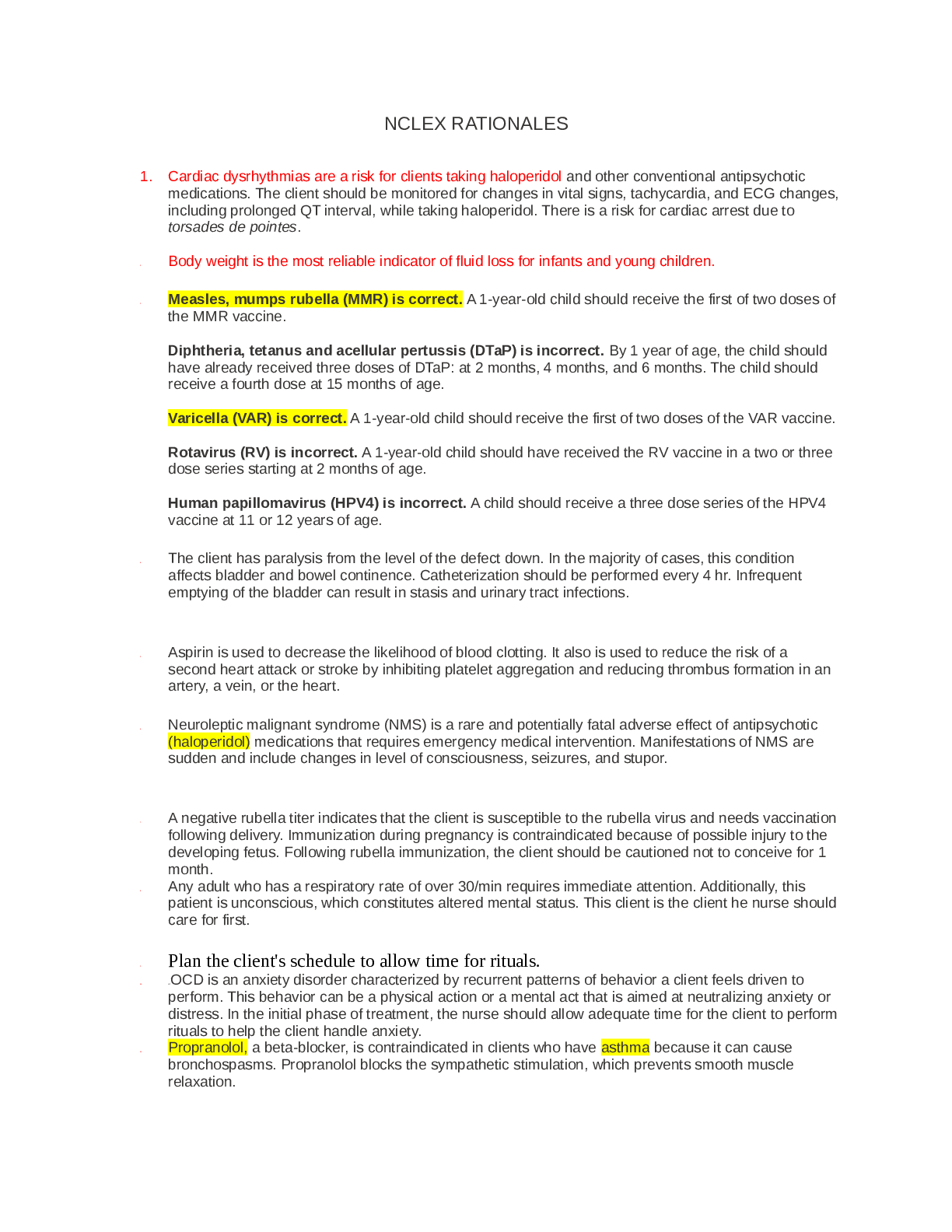

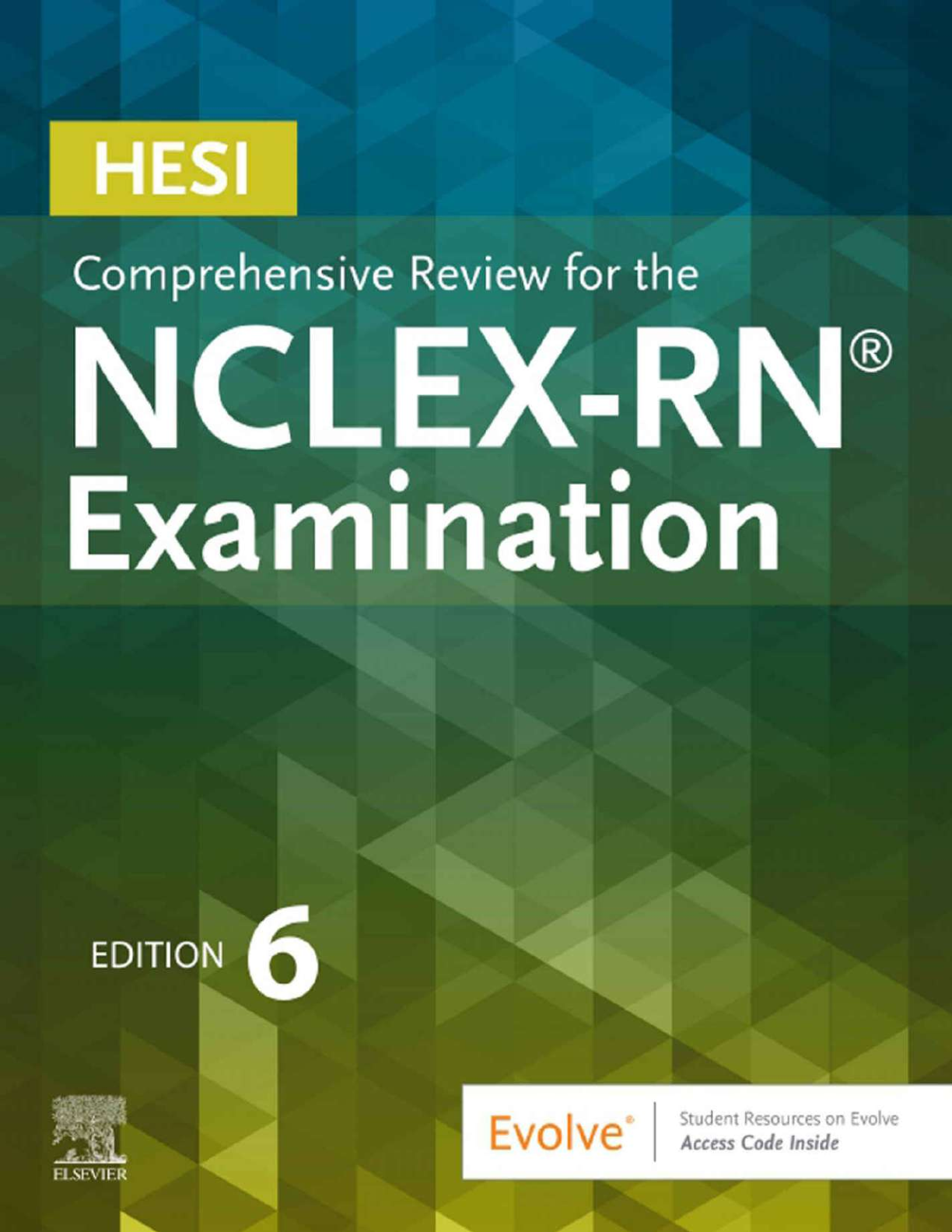

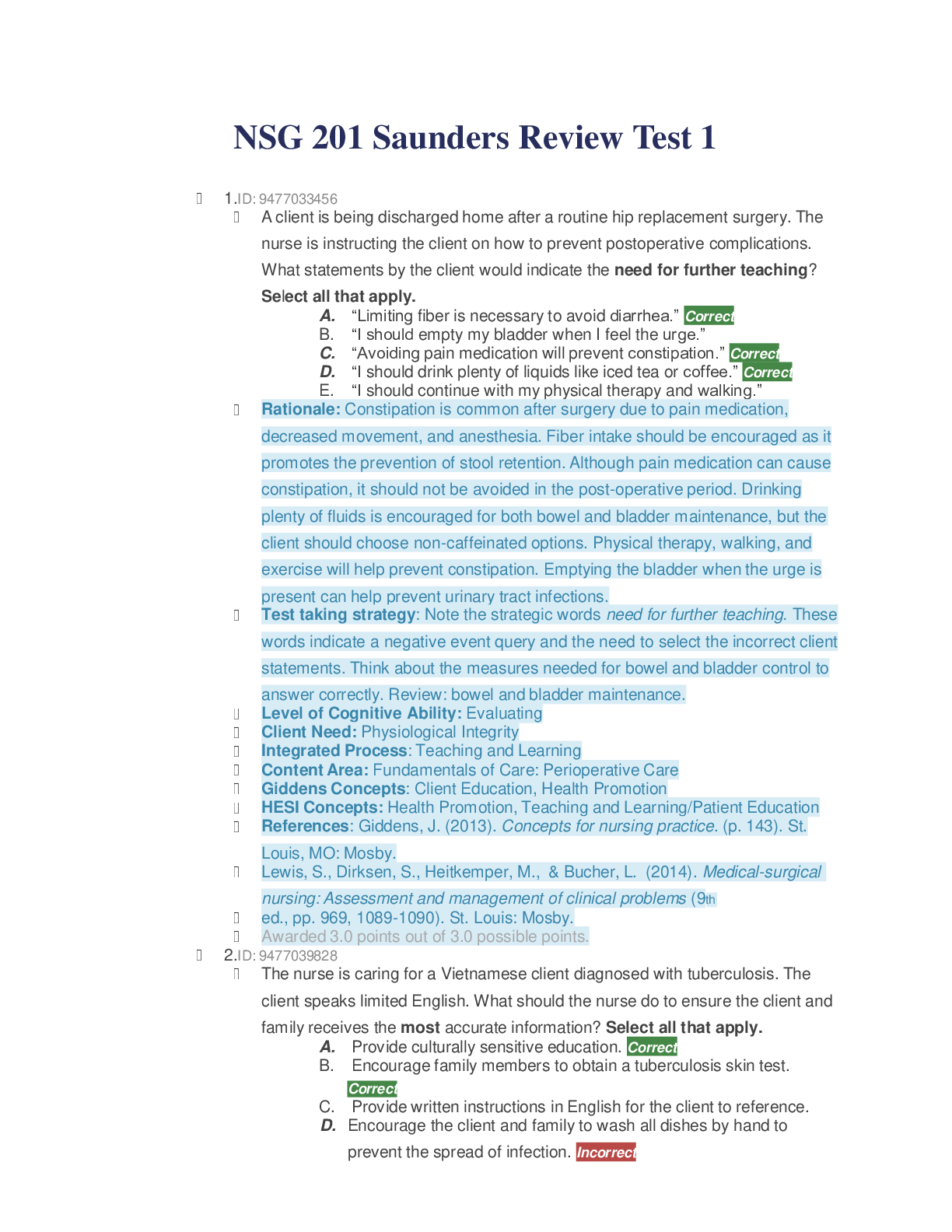
NCLEX.png)

